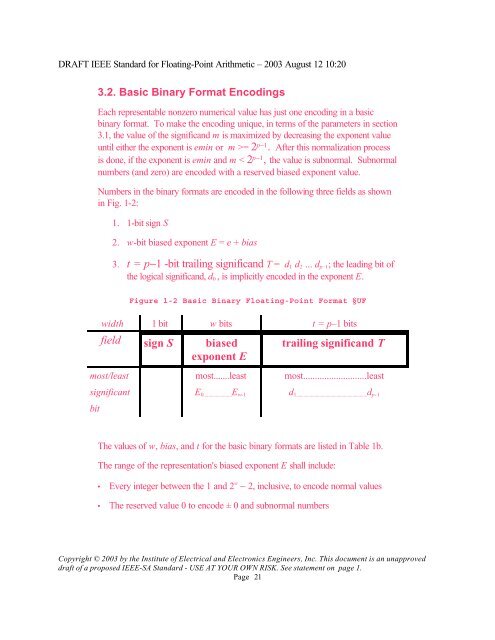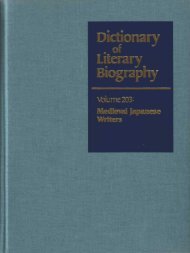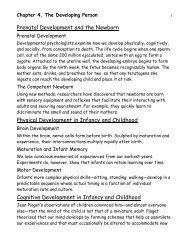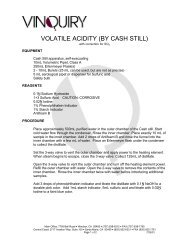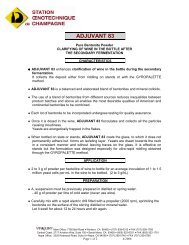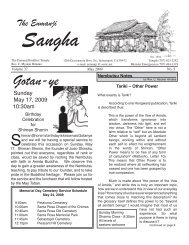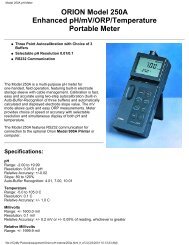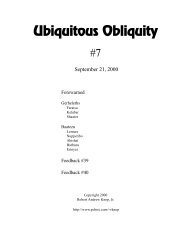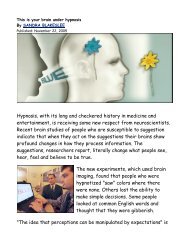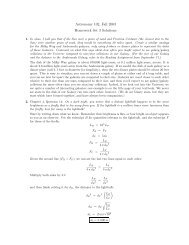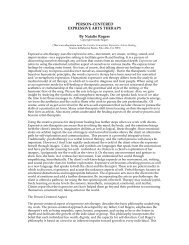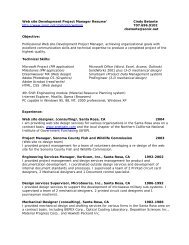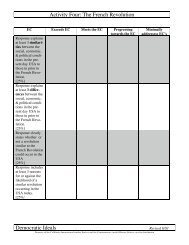DRAFT IEEE Standard for Binary Floating-Point Arithmetic - Sonic.net
DRAFT IEEE Standard for Binary Floating-Point Arithmetic - Sonic.net
DRAFT IEEE Standard for Binary Floating-Point Arithmetic - Sonic.net
You also want an ePaper? Increase the reach of your titles
YUMPU automatically turns print PDFs into web optimized ePapers that Google loves.
<strong>DRAFT</strong> <strong>IEEE</strong> <strong>Standard</strong> <strong>for</strong> <strong>Floating</strong>-<strong>Point</strong> <strong>Arithmetic</strong> – 2003 August 12 10:20<br />
3.2. Basic <strong>Binary</strong> Format Encodings<br />
Each representable nonzero numerical value has just one encoding in a basic<br />
binary <strong>for</strong>mat. To make the encoding unique, in terms of the parameters in section<br />
3.1, the value of the significand m is maximized by decreasing the exponent value<br />
until either the exponent is emin or m >= 2 p−1 . After this normalization process<br />
is done, if the exponent is emin and m < 2 p−1 , the value is subnormal. Subnormal<br />
numbers (and zero) are encoded with a reserved biased exponent value.<br />
Numbers in the binary <strong>for</strong>mats are encoded in the following three fields as shown<br />
in Fig. 1-2:<br />
1. 1-bit sign S<br />
2. w-bit biased exponent E = e + bias<br />
3. t = p−1 -bit trailing significand T = d 1 d 2 ... d p–1 ; the leading bit of<br />
the logical significand, d 0 , is implicitly encoded in the exponent E.<br />
Figure 1-2 Basic <strong>Binary</strong> <strong>Floating</strong>-<strong>Point</strong> Format §UF<br />
width 1 bit w bits t = p–1 bits<br />
field sign S biased<br />
exponent E<br />
trailing significand T<br />
most/least<br />
significant<br />
bit<br />
most.......least<br />
E 0....................... E w-1<br />
most...........................least<br />
d 1.......................................................... d p-1<br />
The values of w, bias, and t <strong>for</strong> the basic binary <strong>for</strong>mats are listed in Table 1b.<br />
The range of the representation's biased exponent E shall include:<br />
• Every integer between the 1 and 2 w − 2, inclusive, to encode normal values<br />
• The reserved value 0 to encode ± 0 and subnormal numbers<br />
Copyright © 2003 by the Institute of Electrical and Electronics Engineers, Inc. This document is an unapproved<br />
draft of a proposed <strong>IEEE</strong>-SA <strong>Standard</strong> - USE AT YOUR OWN RISK. See statement on page 1.<br />
Page 21


